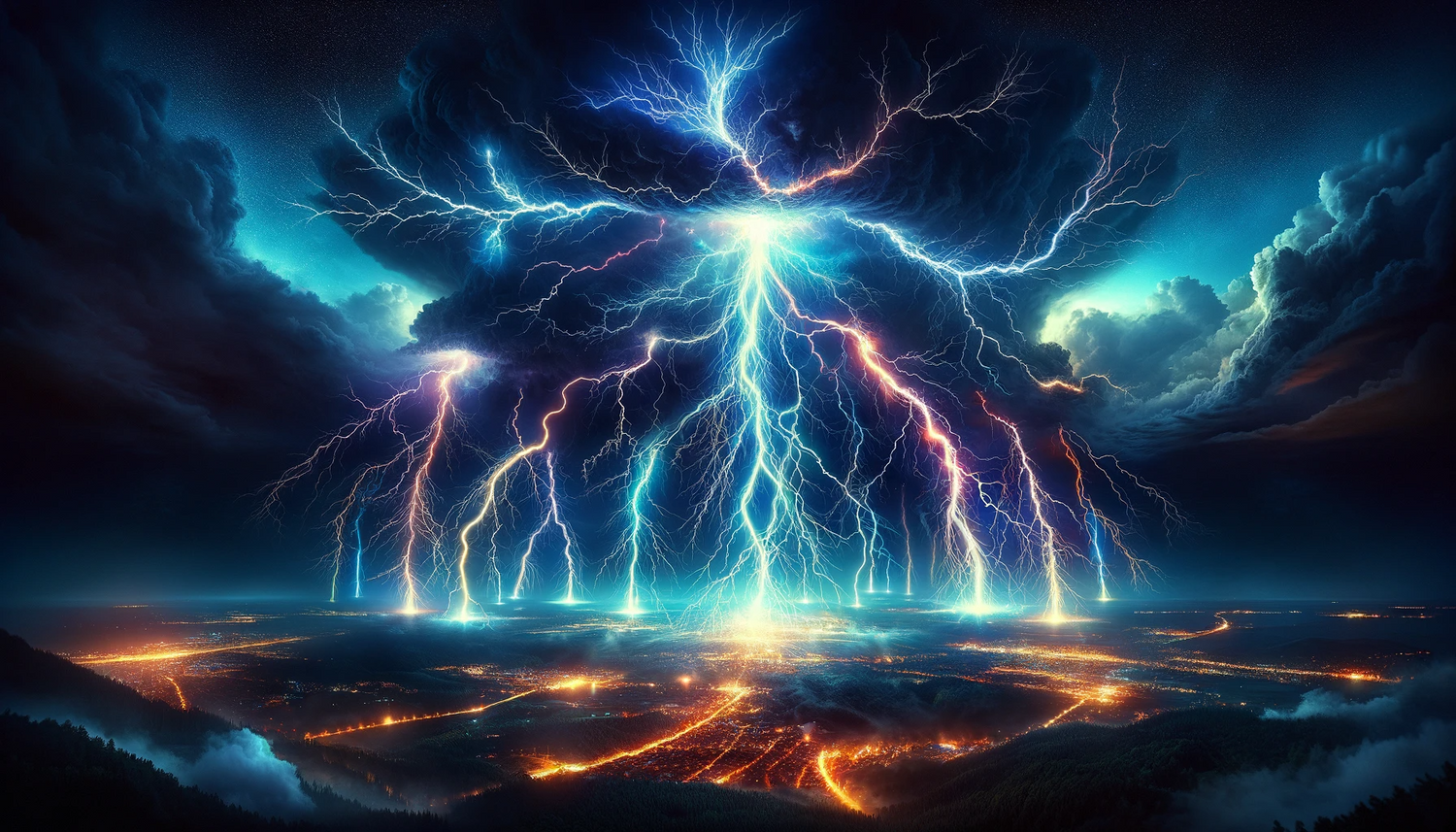Lightning: Nature's Spectacular Light Show
Understanding Lightning: A Brief Introduction
Lightning is one of nature's most powerful and spectacular phenomena. It's not only awe-inspiring but also a fascinating subject of study in physics. Lightning is an electric current that forms in the atmosphere, creating a bright flash and a thunderous sound. But what really goes on during a lightning strike, and how hot does it get? Let's dive into the electrifying world of lightning.
The Incredible Heat of Lightning
How Hot is Lightning, Really?
When we talk about lightning, one of the most striking facts is its temperature. Lightning can heat the air through which it travels to temperatures five times hotter than the surface of the Sun. That’s about 30,000 Kelvin or 53,540 degrees Fahrenheit! This intense heat is what causes the air to expand rapidly, leading to the thundering sound that follows a lightning flash.
Comparing Temperatures: Lightning vs. The Sun
To put it into perspective, the surface of the Sun is approximately 10,000 degrees Fahrenheit. Lightning’s temperature dwarfs this, showcasing the incredible energy released during a strike.
The Science Behind Lightning Strikes
How Does Lightning Form?
Lightning is a result of the buildup of electrical charges in a storm cloud. When the difference in charge between the cloud and the ground (or another cloud) becomes too great, it's released in the form of lightning. This discharge can travel at speeds of up to 270,000 miles per hour!
The Path of a Lightning Strike
A lightning strike isn’t just a straight line. It can branch out in several directions, creating a spectacular display. The path it takes depends on areas of differing charge and resistance in the air.
The Different Types of Lightning
Not All Lightning is the Same
There are several types of lightning, each unique in appearance and formation. The most common type is cloud-to-ground lightning, but there are also intra-cloud and cloud-to-cloud types, which occur within or between clouds.
Rare and Unique Lightning Forms
Some rare forms of lightning include ball lightning, a mysterious and unexplained phenomenon that appears as floating, glowing orbs, and sprites, which are large-scale electrical discharges occurring high above thunderstorm clouds.
Lightning Safety: What You Need to Know
The Risks of Lightning
Lightning is as dangerous as it is beautiful. A single strike can carry up to 300 million volts of electricity and up to 30,000 amps. This amount of power can cause severe damage to buildings and is lethal to living beings.
Staying Safe During a Storm
To stay safe during a thunderstorm, seek shelter in a substantial building or a car with a metal roof. Avoid open fields, tall objects like trees, and water, as these can attract lightning.
The Role of Lightning in Nature
Lightning and Nitrogen Fixation
Lightning plays a significant role in nature. One of its lesser-known but vital roles is nitrogen fixation. The high temperatures of lightning help to break down nitrogen molecules in the air, enabling them to combine with oxygen and form nitrates, which are essential for plant growth.
The Ecological Impact of Lightning
Lightning fires, particularly in grasslands and forests, are a natural part of ecosystem renewal. They clear dead vegetation, return nutrients to the soil, and can spur the growth of new plants.
The Impact of Lightning on Modern Life
Power Surges and Electrical Damage
In our modern world, lightning strikes can cause significant disruptions. They can lead to power surges that damage electrical grids and electronic devices. It's why surge protectors are essential in areas prone to thunderstorms.
Lightning and Aviation
Lightning is also a concern in aviation, as it can strike airplanes. However, aircraft are designed to withstand lightning strikes, and direct hits rarely result in significant damage or danger to the aircraft or passengers.
Research and Advances in Lightning Science
Studying Lightning
Scientists continue to study lightning to better understand its behavior and effects. Advancements in high-speed photography and sensor technology have allowed for more detailed observations of lightning than ever before.
Predicting and Harnessing Lightning
There's ongoing research into predicting lightning strikes and potentially harnessing the energy released during a storm. While the latter is still largely theoretical, it represents a fascinating area of study in renewable energy.
Conclusion: The Power and Beauty of Lightning
A Force of Nature to Respect and Admire
Lightning is a natural wonder that combines beauty, power, and scientific intrigue. It reminds us of the incredible forces at play in our atmosphere and the importance of respecting nature’s power.
Continuing to Uncover Lightning’s Mysteries
As we continue to study and understand lightning, we open doors to new scientific discoveries and practical applications. From enhancing weather prediction models to improving safety protocols, the study of lightning has far-reaching implications.









